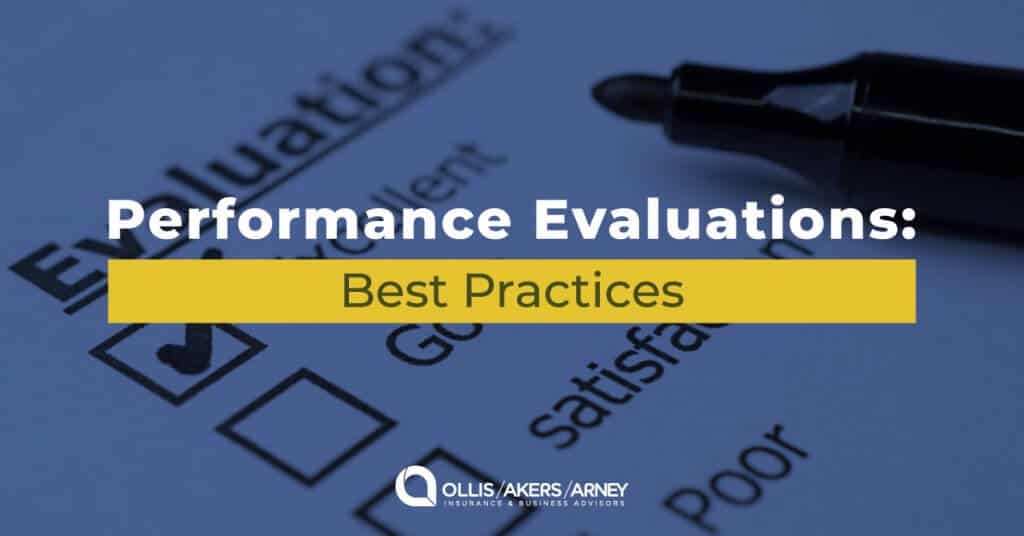Performance Management is an important part of a company’s quality assurance and employee engagement strategies. Many companies formally evaluate an employee’s performance and progress after an initial introductory period and then again on an annual or semi-annual basis. Although performance evaluations can improve productivity and employee morale, many employers do not make them a high priority because they are time-consuming and are sometimes viewed by managers as having little practical value.
Why Conduct a Performance Evaluation?
- To promote growth and competence and to increase employee productivity
- To facilitate employer-employee communication and develop relationships
- To hold all employees to the same standard of performance and identify high and low performers
- To increase employee engagement
- To document incidents of poor performance for future reference
- To establish valid defenses for employment litigation and legitimate reasons for termination
- To determine the level of salary increases
From a productivity perspective, regular performance reviews can help ensure that employees are meeting performance expectations. They can also help evaluate individuals, teams and managers and find underperformers that need to be addressed and coached.
In addition, the increasing number of discrimination and wrongful termination lawsuits illustrate the importance of performance documentation as a means of justifying the legitimate business reasons underlying an employer’s personnel decisions. A series of well-documented evaluations that clearly describe an employee’s poor performance provides the employer with objective evidence of legitimate and nondiscriminatory reasons to support a job transfer, demotion, layoff or termination. Failure to conduct formal evaluations may leave an employer vulnerable in a discrimination of wrongful discharge lawsuit.
Best Practices When Implementing a Performance Evaluation Process
- Perform formal evaluations at the same time for everyone each year. While this increases the workload of managers and supervisors during review time, it forces direct comparisons of employees and establishes a non-biased system.
- Have regular meetings with supervisory staff. Supervisors will learn from each other’s experiences. Provide adequate training and insist on candid, objective observations.
- Clearly communicate to employees what their duties are and what is satisfactory performance. Accomplish this through periodic reviews of job descriptions, training, and both formal and informal feedback.
- Tell employees the criteria upon which their performance will be reviewed. Develop standards and establish reasonable goals for employees. Make sure that employees understand the consequences of their failure to meet expectations.
- Don’t wait until the annual evaluation to provide feedback; offer it throughout the year. Provide both positive and developmental feedback.
- Document poor performance in writing. This can be done in the form of coaching or counseling.
- Ask employees to complete a self-appraisal in addition to the review completed by the manager. This can identify gaps where greater dialogue will be necessary.
- Give employees the opportunity to review, challenge, and comment on the evaluation.
- Be flexible and willing to change a rating if valid information is provided.
- Meet with employees to discuss all evaluations and expectations.
- Have employees sign the evaluation. While the employee may not agree with it, it provides evidence that the employee has seen it and has been provided a copy. If the employee refuses to sign, document the refusal to sign the appraisal.
- Establish a review process for evaluations. This will keep the supervisor honest and ensure that supervisory staff is performing reviews consistently.
- Give employees time to improve and offer resources and assistance if appropriate.
- Follow established procedures consistently. Apply all procedures and standards equally to all employees.
- There should be no surprises in performance appraisals. If this is the first time an issue is being addressed, it typically does not belong in an annual appraisal.
- Managers should be held responsible for helping subordinates develop and improve.
- Maintain confidentiality in employee performance evaluations.
In my experience, most employees want greater feedback than what is being provided. Positive reinforcement drives higher productivity and engagement. Developmental feedback and coaching help drive behavioral changes and, in turn, higher productivity. It’s a win/win.






